
Barefoot Computing cross-curricular lessons and classroom resources.
- Subject:
- Applied Science
- Computer Science
- Mathematics
- Physical Science
- Material Type:
- Activity/Lab
- Date Added:
- 04/14/2022

Barefoot Computing cross-curricular lessons and classroom resources.
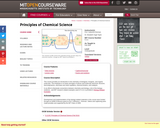
"This course provides an introduction to the chemistry of biological, inorganic, and organic molecules.ĺĘTheĺĘemphasis isĺĘon basic principles of atomic and molecular electronic structure, thermodynamics, acid-base and redox equilibria, chemical kinetics, and catalysis. In an effort to illuminate connections between chemistry and biology, a list of the biology-, medicine-, and MIT research-related examples used in 5.111 is provided in Biology-Related Examples. Acknowledgements Development and implementation of the biology-related materials in this course were funded through an HHMI Professors grant to Prof. Catherine L. Drennan."
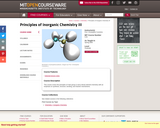
This course covers the principles of main group (s and p block) element chemistry with an emphasis on synthesis, structure, bonding, and reaction mechanisms.
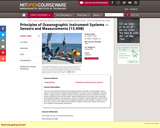
This course introduces theoretical and practical principles of design of oceanographic sensor systems. Topics include: transducer characteristics for acoustic, current, temperature, pressure, electric, magnetic, gravity, salinity, velocity, heat flow, and optical devices; limitations on these devices imposed by ocean environments; signal conditioning and recording; noise, sensitivity, and sampling limitations; and standards. Lectures by experts cover the principles of state-of-the-art systems being used in physical oceanography, geophysics, submersibles, acoustics. For lab work, day cruises in local waters allow students to prepare, deploy and analyze observations from standard oceanographic instruments.
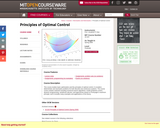
Studies the principles of deterministic optimal control. Variational calculus and Pontryagin's maximum principle. Applications of the theory, including optimal feedback control, time-optimal control, and others. Dynamic programming and numerical search algorithms introduced briefly.
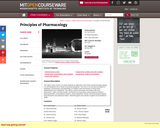
An introduction to pharmacology. Topics include mechanisms of drug action, dose-response relations, pharmacokinetics, drug delivery systems, drug metabolism, toxicity of pharmacological agents, drug interactions, and substance abuse. Selected agents and classes of agents examined in detail.
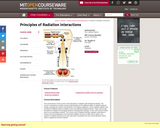
Explores the interaction of radiation with matter at the microscopic level from both the theoretical and experimental viewpoints. Emphasis on radiation effects in biological systems. Topics include energy deposition by various types of radiation, including the creation and behavior of secondary radiations; the effects of radiation on cells and on DNA; and experimental techniques used to measure these radiation effects. Cavity theory, microdosimetry and methods used to simulate radiation track structure are reviewed. Examples of current literature used to relate theory, modeling, and experimental methods. Requires a term paper and presentation. The central theme of this course is the interaction of radiation with biological material. The course is intended to provide a broad understanding of how different types of radiation deposit energy, including the creation and behavior of secondary radiations; of how radiation affects cells and why the different types of radiation have very different biological effects. Topics will include: the effects of radiation on biological systems including DNA damage; in vitro cell survival models; and in vivo mammalian systems. The course covers radiation therapy, radiation syndromes in humans and carcinogenesis. Environmental radiation sources on earth and in space, and aspects of radiation protection are also discussed. Examples from the current literature will be used to supplement lecture material.

Blast a Buick out of a cannon! Learn about projectile motion by firing various objects. Set the angle, initial speed, and mass. Add air resistance. Make a game out of this simulation by trying to hit a target.
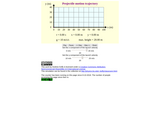
This simulation is about Projectile Motion set initial velocity components
هذه المحاكاة تتعلق بحركة المقذوفات - وآلية تحديد مكونات السرعه الأولية.
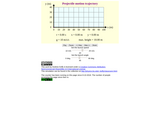
This simulation is about Projectile Motion set speed and angle. هذه المحاكاة تتعلق بحركة المقذوفات - السرعه والزاوية
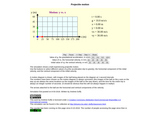
This simulation is about Projectile Motion with motion diagram and velocity components
, هذه المحاكاة تتحدث عن - حركة المقذوفات , مع عناصر الرسم البياني الحركة والسرعه.
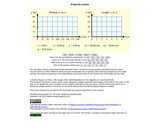
This simulation is about Projectile Motion (with motion diagram, velocity components, and graphs,
هذه المحاكاة هي تتحدث عن حركة المقذوفات ومايتعلق بمخطط الحركة، مكوناته والسرعة، والرسوم البيانية

This wiki page documents the Projection Investigation Activity done during San Francisco Unified School District's SLANT workshop on January 29, 2011. Projection information, Julia Marshall's 5 Ways to Integrate, and links are provided, as well as the introductory Improv Activity "Advertising Team" which stretches the imagination to design something for the future. The Projection Investigation Activity begins with research around a scientific theme, then brainstorming and prototyping design ideas around that theme, and finally writing a narrative to present the prototype.
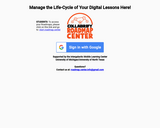
Students will investigate properties of solids, liquids, and gasses.
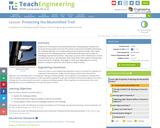
Students are introduced to the (hypothetical) task of developing an invisible (non-intrusive) security system to protect the school's treasured mummified troll! Solving the challenge depends on an understanding of the properties of light. After being introduced to the challenge question, students generate ideas and consider the knowledge required find solutions. They watch a portion of the "Mythbuster's Crimes and Myth-Demeanors" episode ($20), which helps direct their research and learning toward solving the challenge. They begin to study laser applications in security systems, coming to realize the role of lasers in today's society.
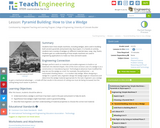
Students learn how simple machines, including wedges, were used in building both ancient pyramids and present-day skyscrapers. In a hands-on activity, students test a variety of wedges on different materials (wax, soap, clay, foam). Students gain an understanding of how simple machines are used in engineering applications to make our lives and work easier.
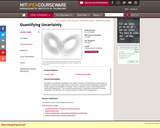
The ability to quantify the uncertainty in our models of nature is fundamental to many inference problems in Science and Engineering. In this course, we study advanced methods to represent, sample, update and propagate uncertainty. This is a "hands on" course: Methodology will be coupled with applications. The course will include lectures, invited talks, discussions, reviews and projects and will meet once a week to discuss a method and its applications.
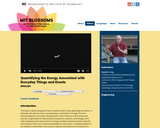
The topic of this video is energy in general, and specifically the ways we can quantify it. In order to make the concepts accessible to a broad audience, this video focuses on everyday things and events. How is it that energy plays a part in a child riding a scooter? How is the energy we consume in playing related to the energy on the food we eat? This video poses these questions to the class and challenges them to put a list of five such items into an ordering from most energy to least.

The topic of this video is energy in general, and specifically the ways we can quantify it. In order to make the concepts accessible to a broad audience, this video focuses on everyday things and events. How is it that energy plays a part in a child riding a scooter? How is the energy we consume in playing related to the energy on the food we eat? This video poses these questions to the class and challenges them to put a list of five such items into an ordering from most energy to least.

Explore the properties of quantum "particles" bound in potential wells. See how the wave functions and probability densities that describe them evolve (or don't evolve) over time.